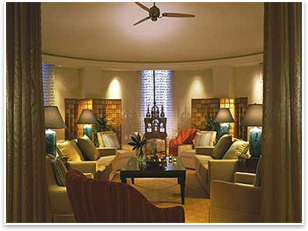
| Homeowners Want Spa Comforts at Home Media-based relaxation rooms are on the rise Summary: In addition to home offices, personal gyms, and media rooms, homeowners are now beginning to request relaxation rooms, says architect and interior designer Johnna Doane of Atlanta’s Brown Doane Architects. Typically a very small enclosed space, relaxation rooms provide a mini-getaway for the mega-stressed.
A room with mass appeal Doane estimates that installing a typical 100-square-foot relaxation room costs approximately $15,000. Although the relaxation rooms come with a large price tag, Doane believes that the rooms have broad appeal. As work and technology encroach evermore into all aspects of life, she believes the need for a personal place to clear the senses will become more important across all income levels. “I think anyone and everyone can benefit from a small room like this,” she says. College campuses, condominium complexes, health and wellness centers, and even some workplaces also are responding to the trend. Recognizing the stress inherent in college life, many universities including Lehigh, Tennessee Technical, the University of Illinois, Fairleigh Dickinson, and Wake Forest are now offering students media-based relaxation rooms. Miraval Living condos in New York City offer an abundance of spa and fitness facilities including a relaxation room, and design giants Nike and Sony provide their employees with relaxation rooms. Clearly, the idea is here to stay. What started in high-end facilities is now “becoming a little more widespread,” says Doane. Relaxation rooms give people “an environment [where] they can completely relax for a while. The extension of it into the home has been a natural progression.” |
||
Copyright 2007 The American Institute of Architects. All rights reserved. Home Page |
||
news headlines
practice
business
design
The meditation room at the Grande Lakes Orlando Hotel. From the Grand Lakes Web site.

 Although there are myriad products on the market that are intended to provide consumers with comfort and a few moments of relaxation, these items are usually tucked into a multi-purpose space where interruptions are frequent—hardly an escape from the everyday. “The whole idea is to have a room that all of these things are located within [where] you go inside, close the door, and shut out the world for a little while. It becomes a complete sensory experience,” says Doane. “This isn’t a library that just happens to have some features like a massage chair in the corner. It’s a total environment.”
Although there are myriad products on the market that are intended to provide consumers with comfort and a few moments of relaxation, these items are usually tucked into a multi-purpose space where interruptions are frequent—hardly an escape from the everyday. “The whole idea is to have a room that all of these things are located within [where] you go inside, close the door, and shut out the world for a little while. It becomes a complete sensory experience,” says Doane. “This isn’t a library that just happens to have some features like a massage chair in the corner. It’s a total environment.”